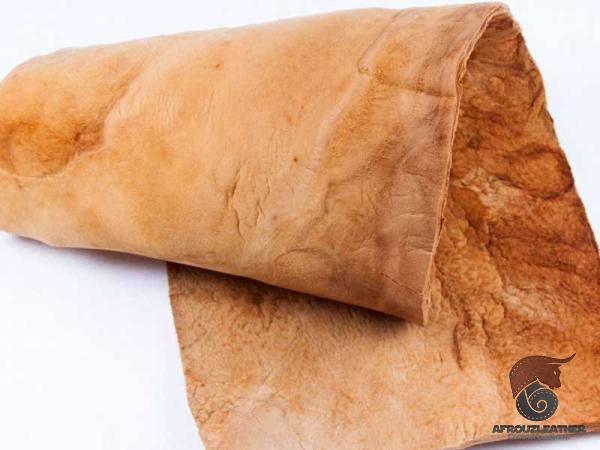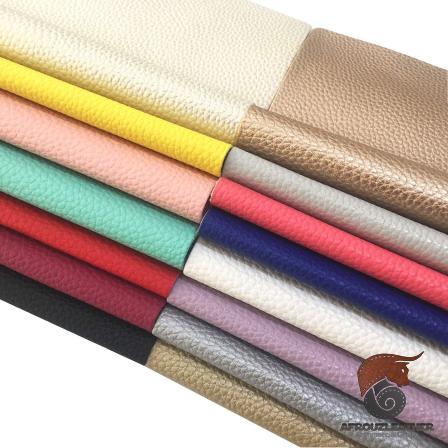Leather is a versatile and durable material that has been used for centuries in the production of various goods. It is derived from the hides or skins of animals, which undergo a tanning process to enhance their qualities. There are numerous types of leather available, each with its own unique characteristics and uses. 1. Full-Grain Leather: Full-grain leather is the highest quality leather available. It is made from the top layer of the hide, which retains all of the natural markings and grain patterns. Full-grain leather is known for its durability, strength, and natural beauty. It develops a rich patina over time and is commonly used in the production of luxury goods such as high-end furniture, wallets, belts, and shoes.
leather
 2. Top-Grain Leather: Top-grain leather is also derived from the top layer of the hide but has been sanded and buffed to remove any imperfections or blemishes. This type of leather is more uniform in appearance and texture compared to full-grain leather. Top-grain leather is commonly used in the production of furniture, handbags, and outerwear. 3. Split Leather: Split leather is made from the lower layers of the hide, after the top grain has been removed. It is not as durable or strong as full-grain or top-grain leather but is more affordable. Split leather is often used in the production of suede, which is known for its soft and velvety texture. It is commonly used in the manufacturing of shoes, bags, and jackets. 4. Nubuck Leather: Nubuck leather is similar to suede but is made from the top grain of the hide, which has been sanded or buffed to create a finer, softer surface. Nubuck leather has a luxurious and velvety feel and is commonly used in the production of high-end footwear, bags, and upholstery.
2. Top-Grain Leather: Top-grain leather is also derived from the top layer of the hide but has been sanded and buffed to remove any imperfections or blemishes. This type of leather is more uniform in appearance and texture compared to full-grain leather. Top-grain leather is commonly used in the production of furniture, handbags, and outerwear. 3. Split Leather: Split leather is made from the lower layers of the hide, after the top grain has been removed. It is not as durable or strong as full-grain or top-grain leather but is more affordable. Split leather is often used in the production of suede, which is known for its soft and velvety texture. It is commonly used in the manufacturing of shoes, bags, and jackets. 4. Nubuck Leather: Nubuck leather is similar to suede but is made from the top grain of the hide, which has been sanded or buffed to create a finer, softer surface. Nubuck leather has a luxurious and velvety feel and is commonly used in the production of high-end footwear, bags, and upholstery.
Specifications of leather
 5. Embossed Leather: Embossed leather is a type of leather that has been stamped or pressed with a pattern or texture. This process creates a textured effect on the surface of the leather, imitating the appearance of other materials such as reptile skin or fabric weaves. Embossed leather is commonly used in the production of handbags, wallets, and accessories. 6. Patent Leather: Patent leather is a glossy and shiny leather that has been coated with a plastic or lacquer finish. This coating gives the leather its distinctive high shine and makes it highly resistant to water and stains. Patent leather is commonly used in the production of footwear, handbags, and accessories, as it provides a sleek and elegant look. 7. Bonded Leather: Bonded leather is made by combining leftover scraps of leather with a bonding agent and then applying a layer of polyurethane onto a fabric backing. While bonded leather is more affordable than genuine leather, it is not as durable or long-lasting.
5. Embossed Leather: Embossed leather is a type of leather that has been stamped or pressed with a pattern or texture. This process creates a textured effect on the surface of the leather, imitating the appearance of other materials such as reptile skin or fabric weaves. Embossed leather is commonly used in the production of handbags, wallets, and accessories. 6. Patent Leather: Patent leather is a glossy and shiny leather that has been coated with a plastic or lacquer finish. This coating gives the leather its distinctive high shine and makes it highly resistant to water and stains. Patent leather is commonly used in the production of footwear, handbags, and accessories, as it provides a sleek and elegant look. 7. Bonded Leather: Bonded leather is made by combining leftover scraps of leather with a bonding agent and then applying a layer of polyurethane onto a fabric backing. While bonded leather is more affordable than genuine leather, it is not as durable or long-lasting.
buy leather
 It is commonly used in the production of low-cost furniture, book covers, and accessories. 8. Faux Leather: Faux leather, also known as synthetic leather or leatherette, is a man-made material that imitates the look and feel of real leather. It is often made from polyvinyl chloride (PVC) or polyurethane (PU). Faux leather is a popular alternative to genuine leather, as it is more affordable, cruelty-free, and easier to clean. It is commonly used in the production of upholstery, clothing, footwear, and accessories. In conclusion, there is a wide variety of leather types available, each with its own unique characteristics and uses. Full-grain and top-grain leather are known for their durability and luxury appeal, while split leather and suede offer a more affordable option. Nubuck leather provides a luxurious and velvety feel, while embossed leather can imitate the appearance of other materials. Patent leather offers a high-shine look, bonded leather provides a cost-effective option, and faux leather offers a cruelty-free alternative. Understanding the types of leather available can help consumers make informed choices when it comes to selecting leather goods.
It is commonly used in the production of low-cost furniture, book covers, and accessories. 8. Faux Leather: Faux leather, also known as synthetic leather or leatherette, is a man-made material that imitates the look and feel of real leather. It is often made from polyvinyl chloride (PVC) or polyurethane (PU). Faux leather is a popular alternative to genuine leather, as it is more affordable, cruelty-free, and easier to clean. It is commonly used in the production of upholstery, clothing, footwear, and accessories. In conclusion, there is a wide variety of leather types available, each with its own unique characteristics and uses. Full-grain and top-grain leather are known for their durability and luxury appeal, while split leather and suede offer a more affordable option. Nubuck leather provides a luxurious and velvety feel, while embossed leather can imitate the appearance of other materials. Patent leather offers a high-shine look, bonded leather provides a cost-effective option, and faux leather offers a cruelty-free alternative. Understanding the types of leather available can help consumers make informed choices when it comes to selecting leather goods.

Your comment submitted.